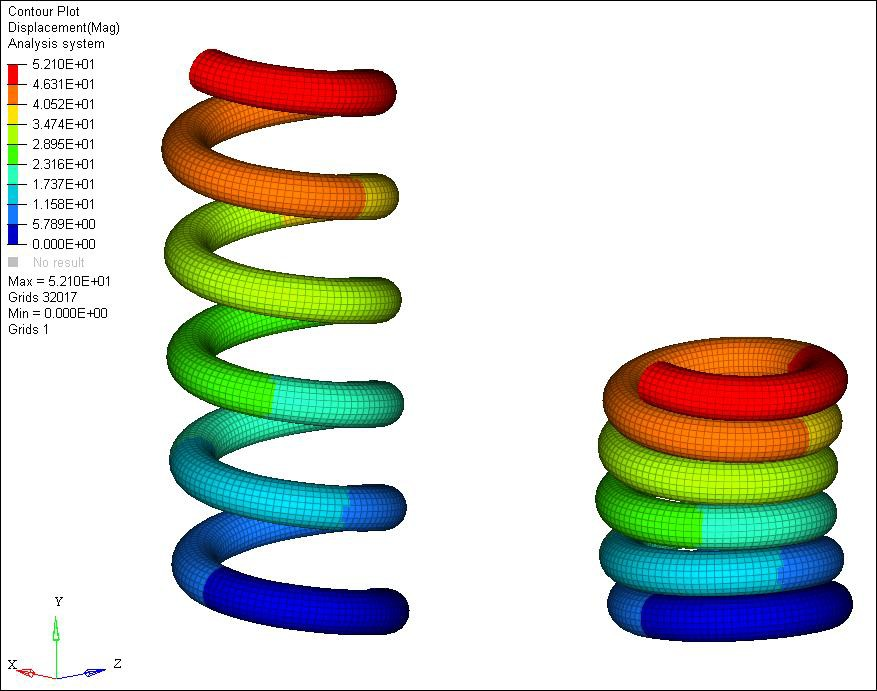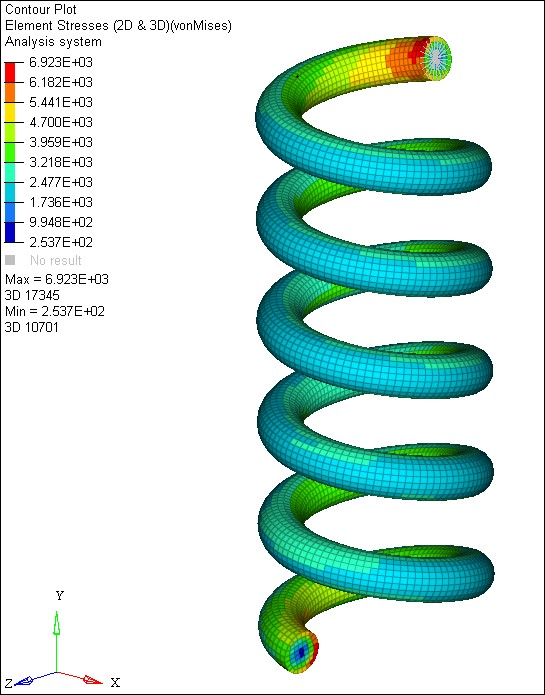OS-E: 0195 Compression of Helical Springs using Self-Contact
This example explains how to use the self-contact to simulate the spring compression.
Model Files
Refer to Access the Model Files to download the required model file(s).
The model file used in this example includes:
mola_Self_contact_v2_SPCF.fem
Model Description
The helical spring is of 3.10 mm cross sectional radius, pitch of 16.5 mm, coil height of 102.5 mm consisting of CHEXA elements of average element size of 1.0 mm. An enforced displacement of 52 mm in negative Y-direction is applied on the top cross-sectional face of the spring and at the bottom face, the constraints of DOF 1-6 is applied. A contact secondary surface is created for the outer surface of the spring. Self-contact can be defined by defining same ID for both secondary and main.
- Young's Modulus
- 210 x 103 MPa
- Poisson's Ratio
- 0.3
- Initial Density
- 7.9 x 10-3 ton/mm3
Results

Figure 1. Displacement Contour for the Helical Spring Compression

Figure 2. von Mises Stress Contour for the Helical Spring Compression